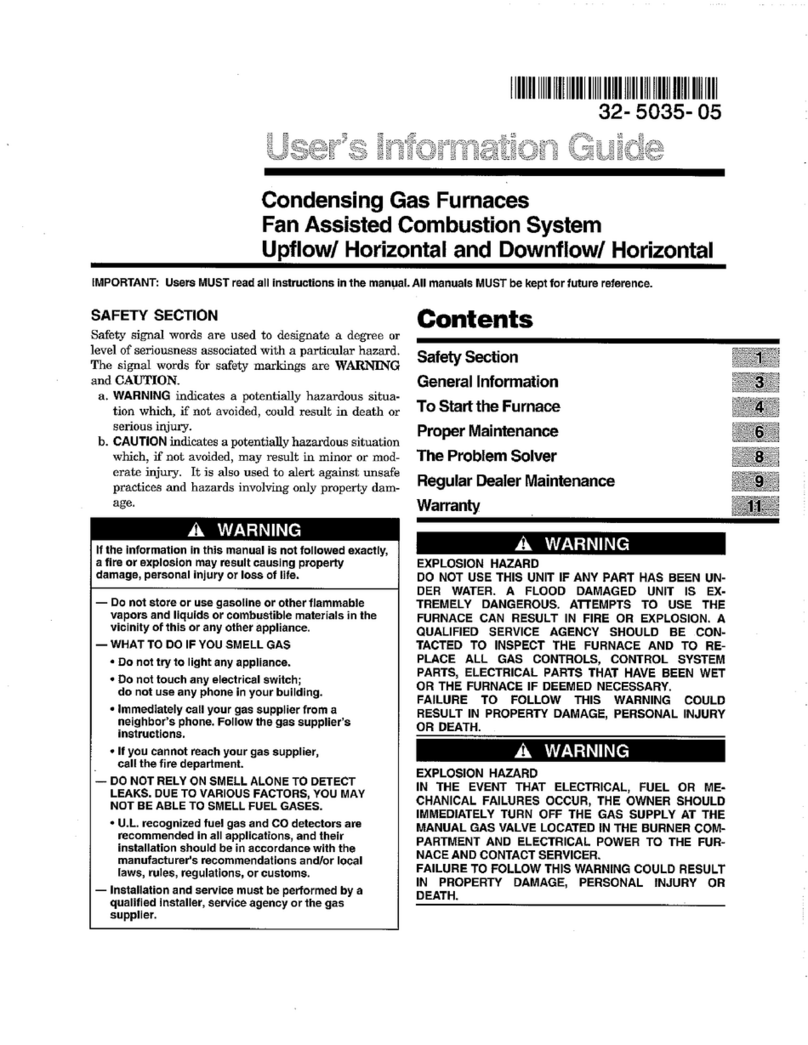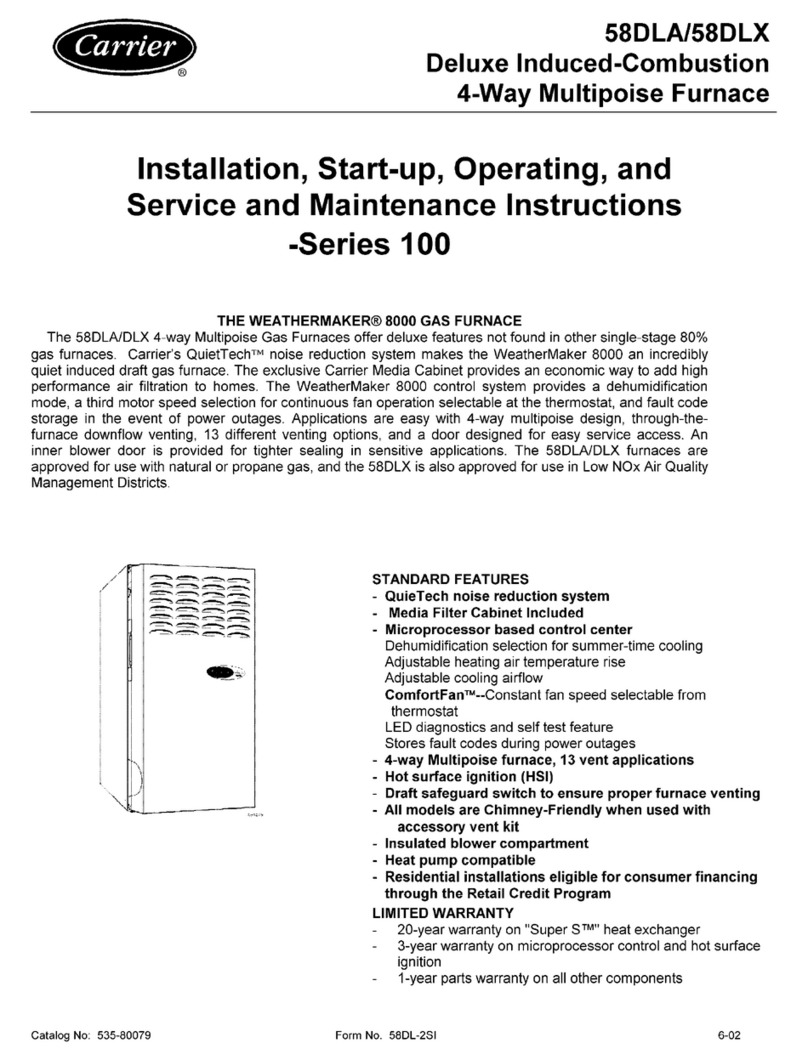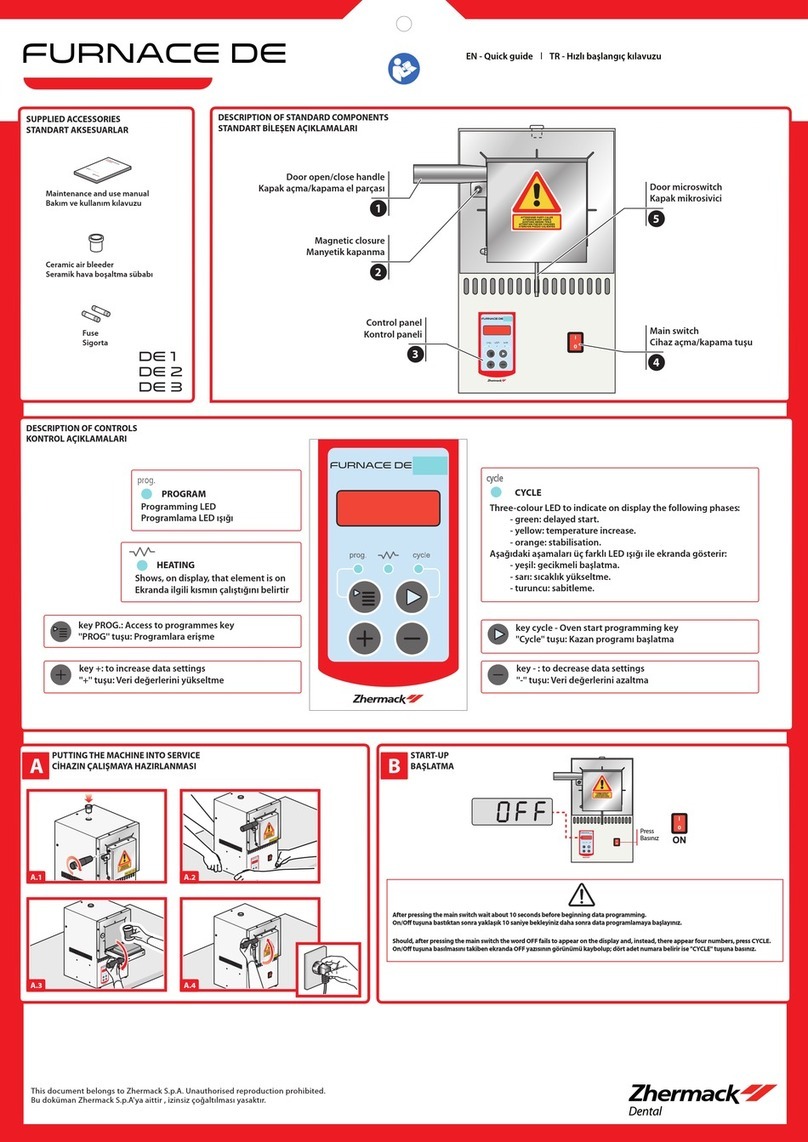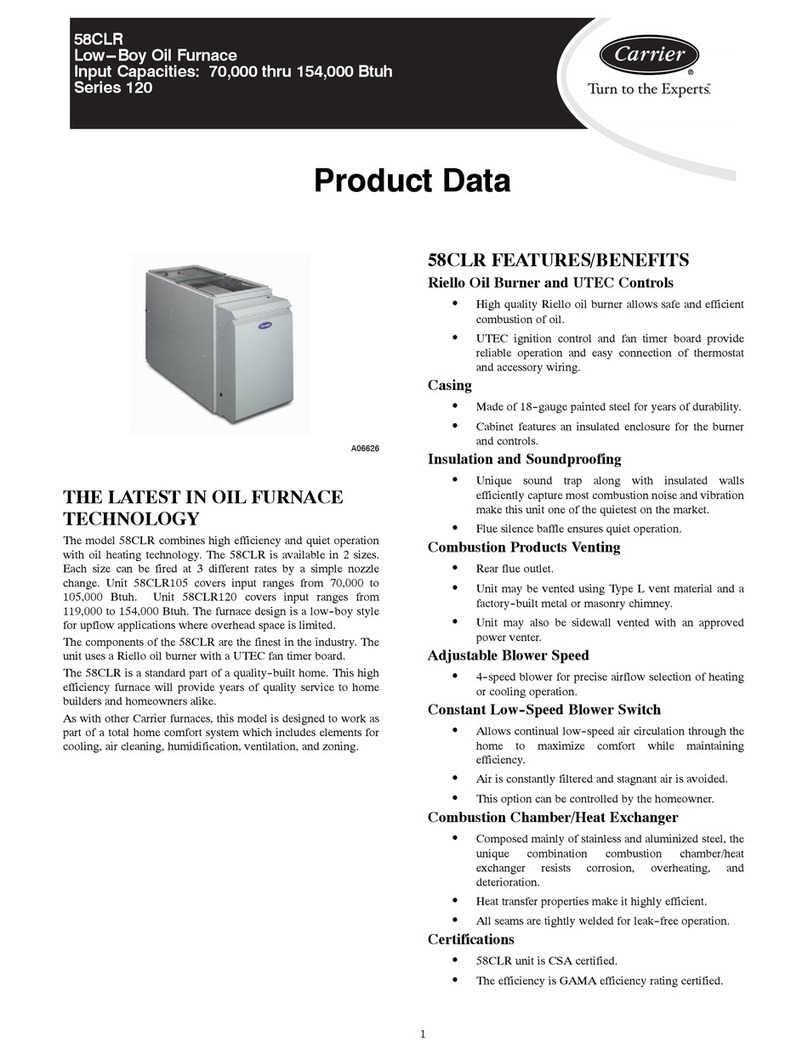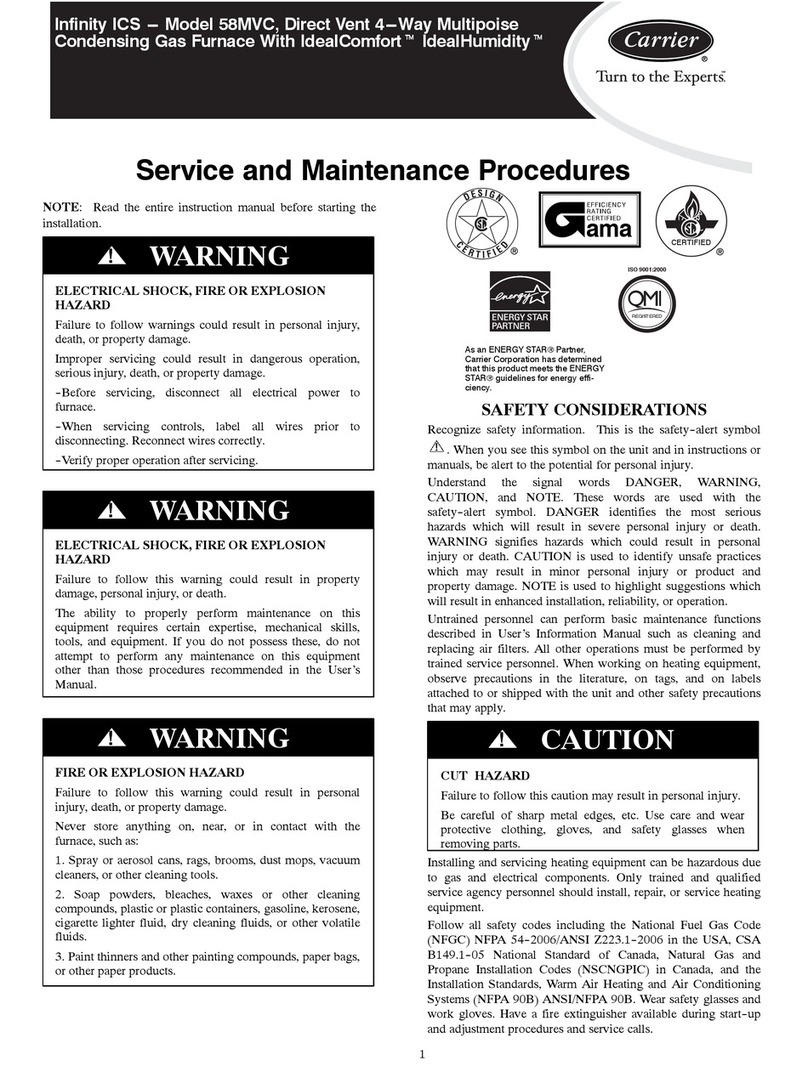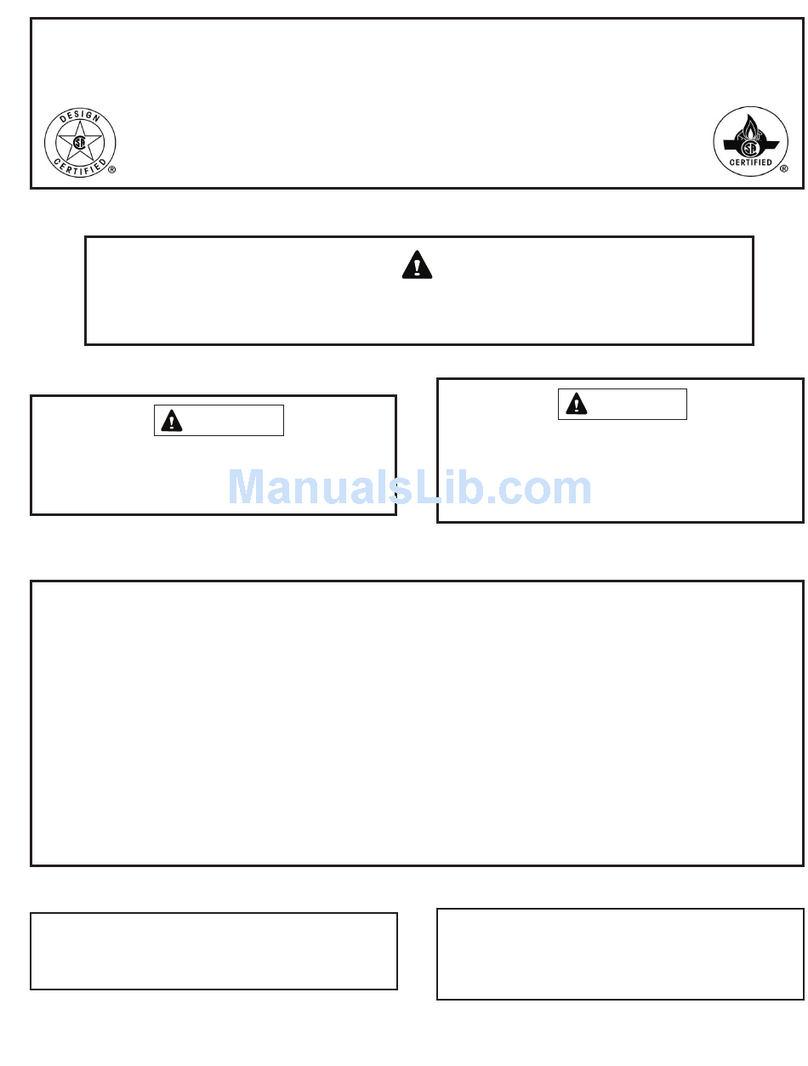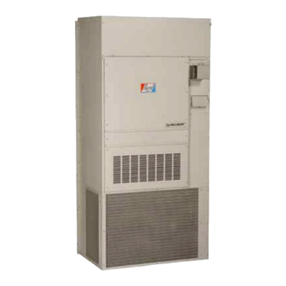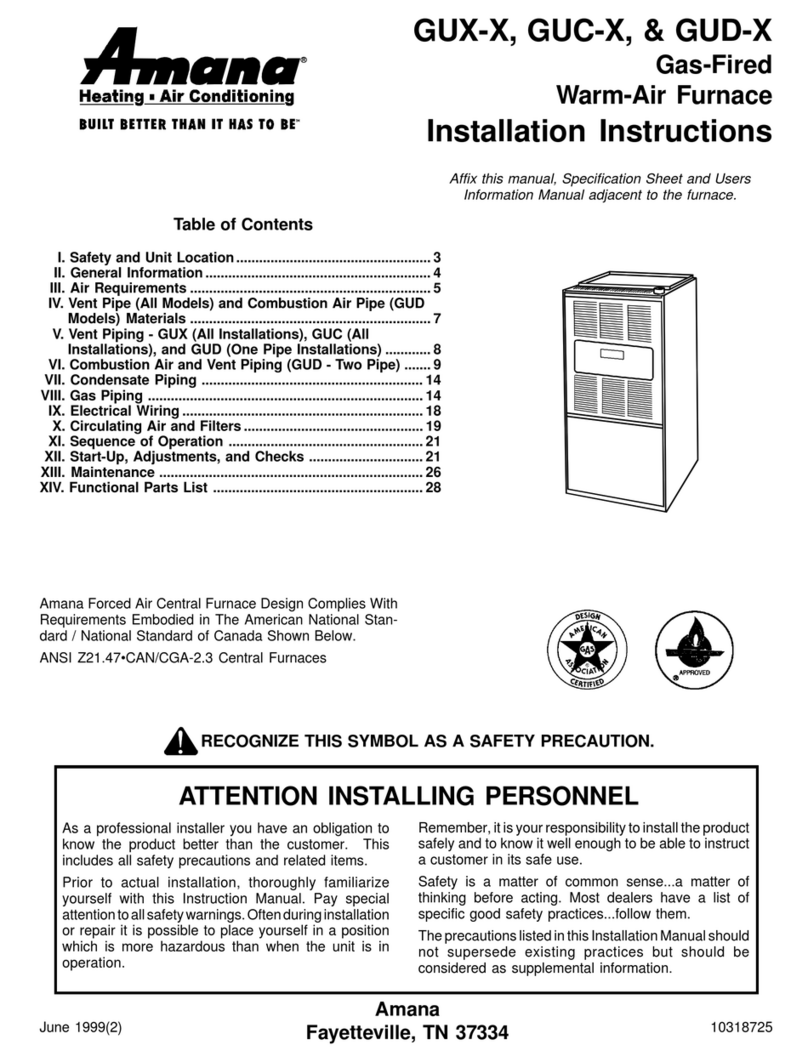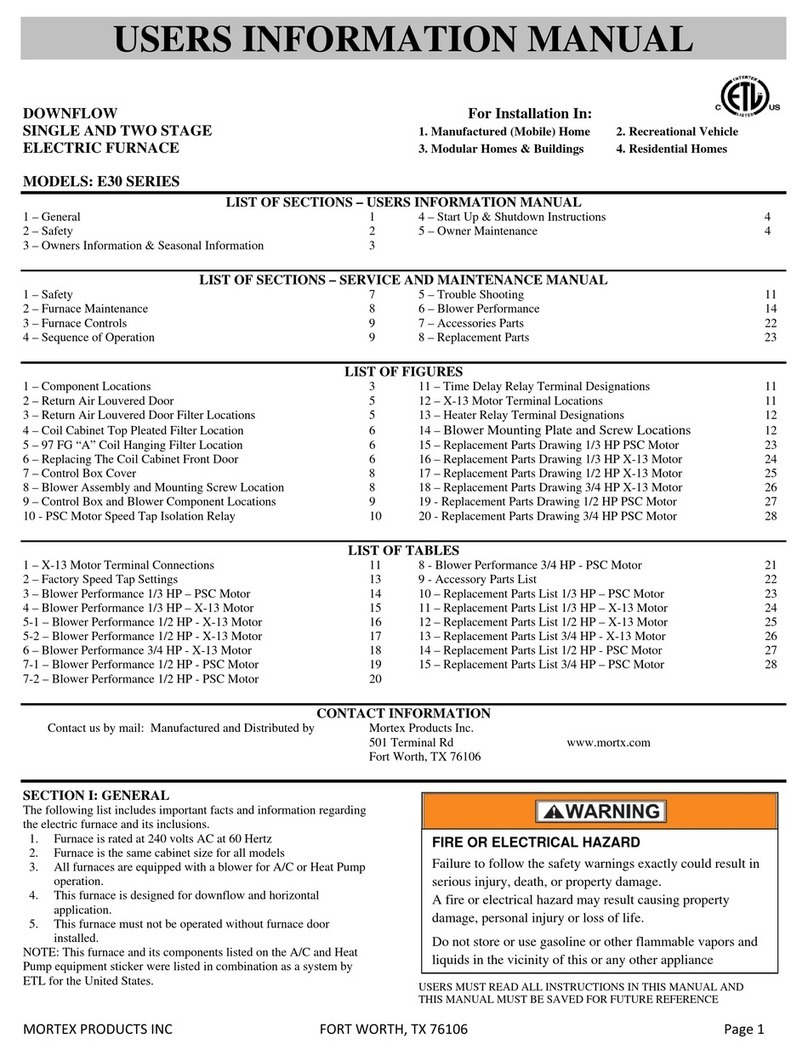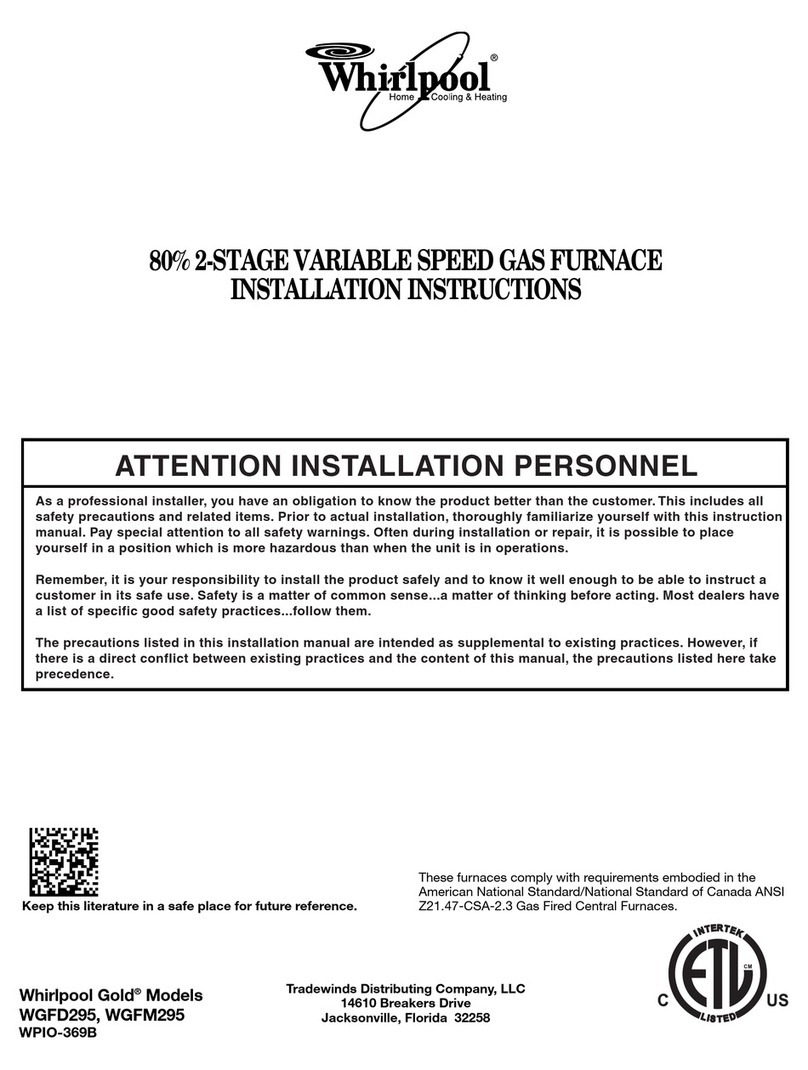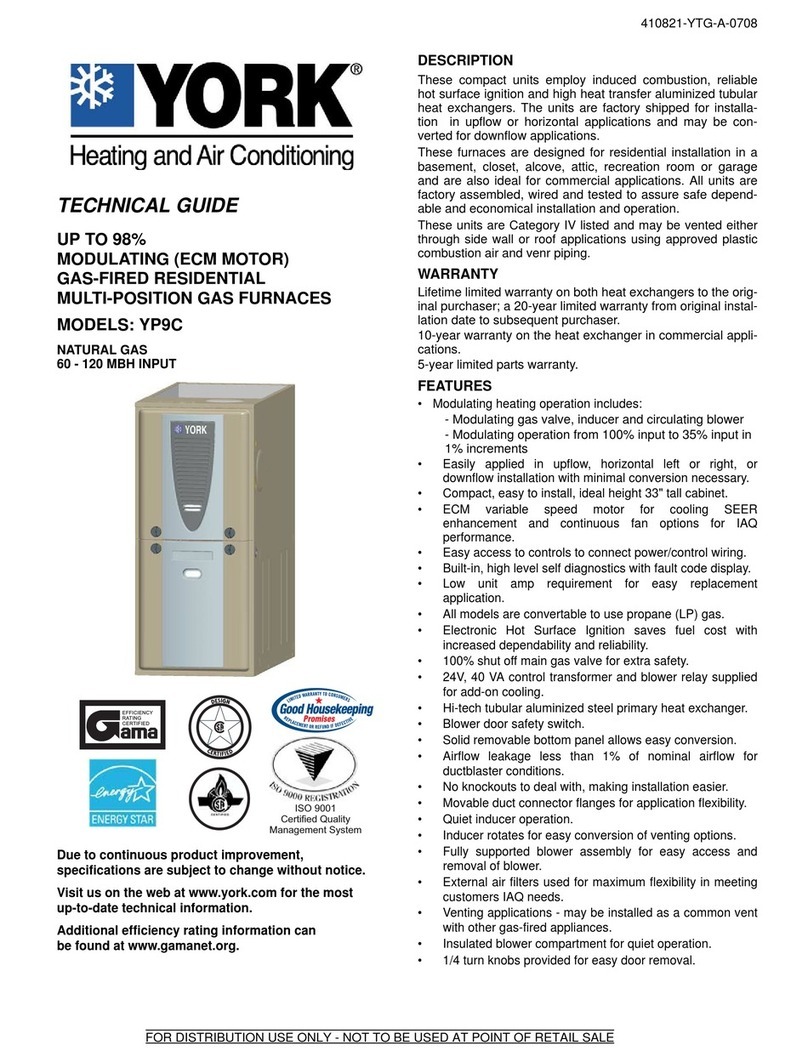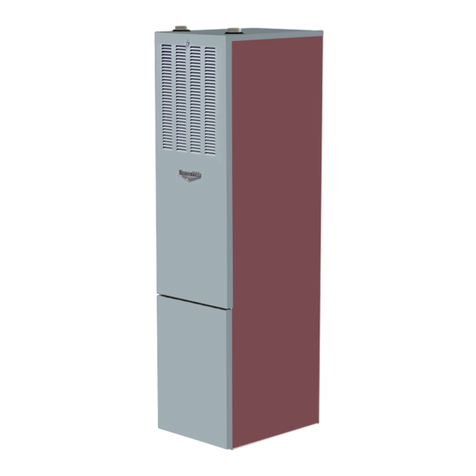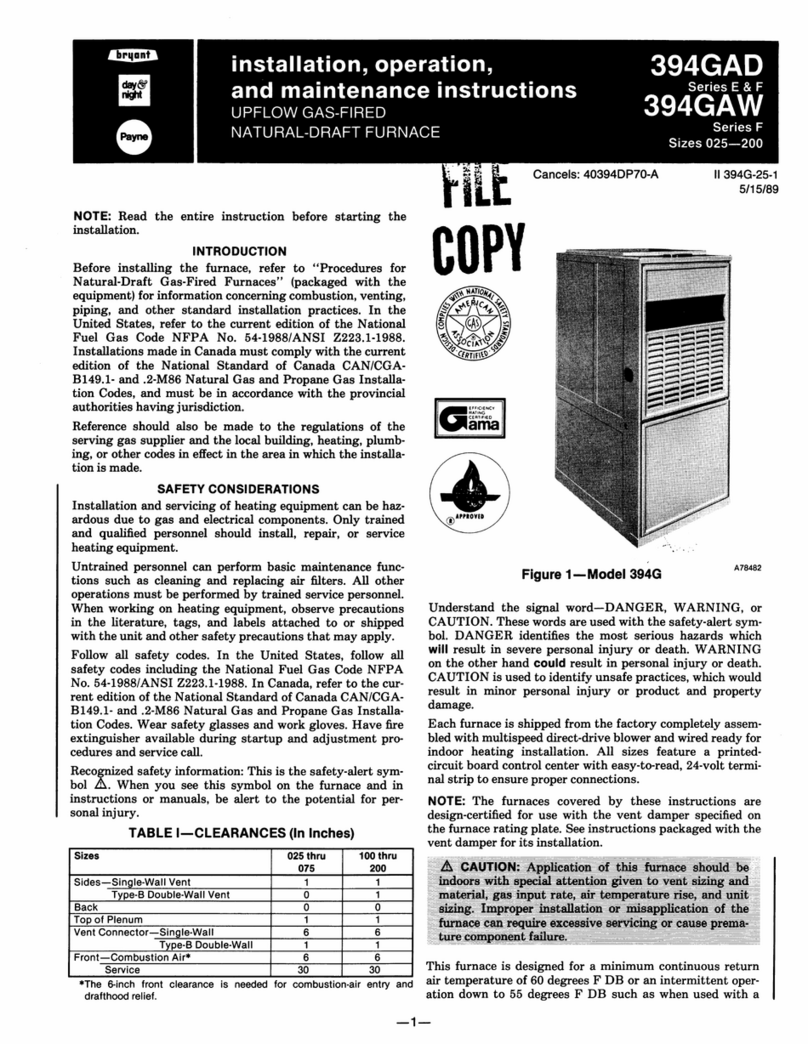
3 Safety Guidelines
•Operate the instrument in room temperatures
between 5-50°C (41-122°F). Allow sufficient
air circulation by leaving at least 6 inches of
space between the furnace and nearby ob-
jects.Nothing should be placed over the top of
the furnace.The furnace should not be placed
under cabinets or tables. Extreme tempera-
turescanbegeneratedoutthetopofthewell.If
the furnace is equipped with cooling coils, use
coldwatercirculationwhenthefurnaceisused
above 600°C. (For specifics see Section 4.5
Plumbing.)
•The furnace is a precise instrument. Although
it has been designed for optimum durability
and trouble free operation, it must be handled
with care.The instrument should not be oper-
ated in wet, oily, dusty or dirty environments.
Keep the well of the instrument free of any for-
eign matter. Do not operate near flammable
materials.
•TheModel9115Furnaceutilizeshighvoltages
and currents to create high temperatures.
Caution should always be maintained during
installation and use of this instrument to pre-
vent electrical shock and burns.Fire can be a
hazard for any device that produces high tem-
peratures. Proper care and installation must
be maintained.Responsible use of this instru-
ment will result in safe operation.
•Do not use fluids to clean out the well.
•Thefurnace generates extremetemperatures.
Precautionsmustbetakentopreventpersonal
injuryordamagetoobjects.Probesmaybeex-
tremely hot when removed from the furnace.
Cautiously handle probes to prevent personal
injury. Carefully place probes on a heat resis-
tant surface or rack until they are at room tem-
perature. SPRT’s should be placed in an
annealing furnace if removed at temperatures
greater than 500°C.
•UseonlygroundedACmains supplyofthe ap-
propriate voltage to power the instrument.The
furnace requires 12 amps at 230V (±10%),
50/60 Hz.
•Before initial use, after transport, and anytime
the furnace has not been energized for more
than 7 days, the instrument needs to be ener-
gized for a “dry-out” period of 1-2 hours before
it can be assumed to meet all of the safety re-
quirements of the IEC 1010-1.
•The instrument is equipped with operator ac-
cessible system fuses. If a fuse blows, it may
be due to a power surge or failure of a compo-
nent.Replacethefuseonce.Ifthefuseblowsa
second time, it is likely caused by failure of a
component.If this occurs, contact Hart Scien-
tific Customer Service. Always replace the
fuse with one of the same rating, voltage, and
type. Never replace the fuse with one of a
higher current rating.
•If a main supply power fluctuation occurs, im-
mediately turn off the furnace. Power bumps
from brown-outs and black-outs can damage
the instrument. Wait until the power has stabi-
lized before re-energizing the furnace.
•The unit is not equipped with wheels.It is con-
sideredtobepermanentlysetonceithasbeen
installed. If the unit must be moved for some
reason, be sure that the fixed point cell has
beenremovedbefore movingthe furnace.Any
movement of the furnace with the cell inside
can damage the cell.The unit is not designed
tobeliftedorcarried.Ifitmustbepickedup,itis
advisable that two people pick the unit up by
placingtheirhandsundertheunitandcarefully
lifting at the same time. Never move the fur-
nace if it is hot.
•Air circulated through the gap surrounding the
furnace core keeps the chassis cool.DO NOT
SHUT OFF THE FURNACE WHILE AT HIGH
TEMPERATURES. The fan will turn off allow-
ing the chassis to become hot.Alternatively, if
used, the cooling water should remain on until
the furnace is cool.
•Oncethe unithas been takentohigh tempera-
tures (over 800°C), it takes days for the unit to
cool completely.
•CAUTION
In the unlikely event that the heat pipe should
leak, do not attempt to put out the fire with wa-
ter or chemical fire extinguishers.Smother the
fire with dry soda ash in accordance with the
MSDS sheets at the end of this manual.
Model 9115 Manual Rev. 761301 13




















